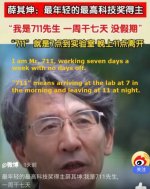Had the US waited to apply the sanctions until it had an actual conflict with China it would have been much more effective. In this way China will have its own counter-measures in place by the time a conflict does happen.I wonder if they see a silver lining though. China has seem dead set on being fully technologically self-reliant. The lack of sanctions wouldn't have had a huge impact on their efforts to copy DUV and EUV technologies. In some ways it would slow them down (less urgency), in some ways it would speed up the efforts (getting more experience with how EUV machines work, perhaps some aid to reverse engineering efforts).
It is also one thing to ban supply of tools you had not supplied before like EUV, and quite another to cut supply and parts of equipment you had sold already breaking established contracts. There is simply no excuse for this. Not when the US isn't in a conflict with China.
Of course the Chinese will. China has the world's largest semiconductor market. It has enough critical mass to be completely indigenous if it chooses to do so.In the long term this isn't good for ASML. As soon as China has a competing technology they will massively subsidize their industry to drive out competitors, as we've seen them do in other areas. That is if they still have the economic power to do so a decade or two down the line.
The Chinese market is just that big. Maybe 20-30% of world semiconductor demand internally, bigger than the US, and more like 50% if you count for semiconductors embedded in Chinese exports.I'm not so sure actually. The Chinese model seems to be near a breaking point. If this was any other country their chip efforts would be considered insane. No chip company in a free market could survive making 7nm chips without a strong international market with healthy profit margins.
The Chinese are competing against incumbents with depreciated fab assets. This is just par for the course if they want to have their own semi industry and not be vulnerable to chip sanctions in the future.How many chip industry bankruptcies can the country handle? This is all funded by a staggering amount of debt in a debt-model that we know with full certainty is completely unsustainable
The founder was from a Taiwanese company which was a competitor with TSMC. Several TSMC engineers (which developed the 28nm process) moved to Samsung (where they developed a 14nm FinFET process) and later to SMIC.Remember that SMIC was built in part by poaching TSMC talent.
They have a lot of Chinese expats all over the world which they can call back to China if they need talent. They also seem to be successful in attracting other East Asian scientists including from Japan.It's hard enough to recruit talent to China already (no option for a non-Chinese to build a life there long term). If they can't pay top dollar for talent it'll be even harder.
You learned the wrong lesson I suppose. The Chinese did make their own ballpoint pen tips in the end. And ballpoints are not a particularly simple thing to make because of the tolerances involved.If they can't even build up a sustainable domestic economy around something as simple as a ballpoint pen tips, how will they build a completely self-reliant chip manufacturing economy? I think they will try, but I think there's a significant chance they'll break their own economy trying.
Last edited:

